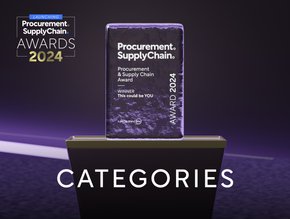Oliver Wight: do these supply chain issues sound familiar?

The primary issues that bring supply chains to a grinding halt sound like a broken record: inventory creep, ballooning costs, ‘where is the bottleneck?’. And often they are discovered too late, at the end of the month, and just as the situation has spiralled out of control.
Michael Snape, Partner at Oliver Wight, has shared his thoughts and solutions to resolving the most common headaches in supply chain - or, as Snape so vivdly equates it, the “massive pimple on your forehead” that emerges hours before a social event.
Five pain points
In a blog titled 'Five supply chain problems you are likely to miss', Snape delves into the most common sticking poi nts for supply chain managers, and pinpoints where things go wrong - and how a quick solution is always at hand with foresight.
Take inventory creep. “You haven’t noticed that actual demand isn’t matching what was planned, but production keep ploughing product into the distribution centre,” Snape says. And when do most supply chain managers hear about this? “Through a phone call at the end of the month asking you for an explanation as to why inventory is so high, or your distribution manager calling you up to say that they can’t fit anymore product into the warehouse”.
The blog post provides insight into a bevy of other common issues that are easily overlooked during the busy and complex day-to-day commitments and changes along the value chain - particularly those often out of the hands of supply chain executives. Running into customer dissatisfaction when inventory levels are high can often be explained by external forces of misalignment in product rollouts or promotions, for instance.
The solution: little and often
Snape plots a two-point plan of performance indicators and a regular daily, weekly, monthly evaluation structure to cut these obstacles down to size early, before they grow into major blockages to the flow of goods. Often attacking the issues head on can mitigate their impact on the supply chain. Snape likens this little and often approach to checking the lights of a car, filling it with oil when necessary, and rolling similar small maintenance tasks to keep the wheels turning.
“Looking for the failure points in your processes by using good measures and then fixing these is a sure-fire way to close the loop and reduce the number of surprises throughout your supply chain,” Snape explains.
Read the full blog post for further insights HERE.






